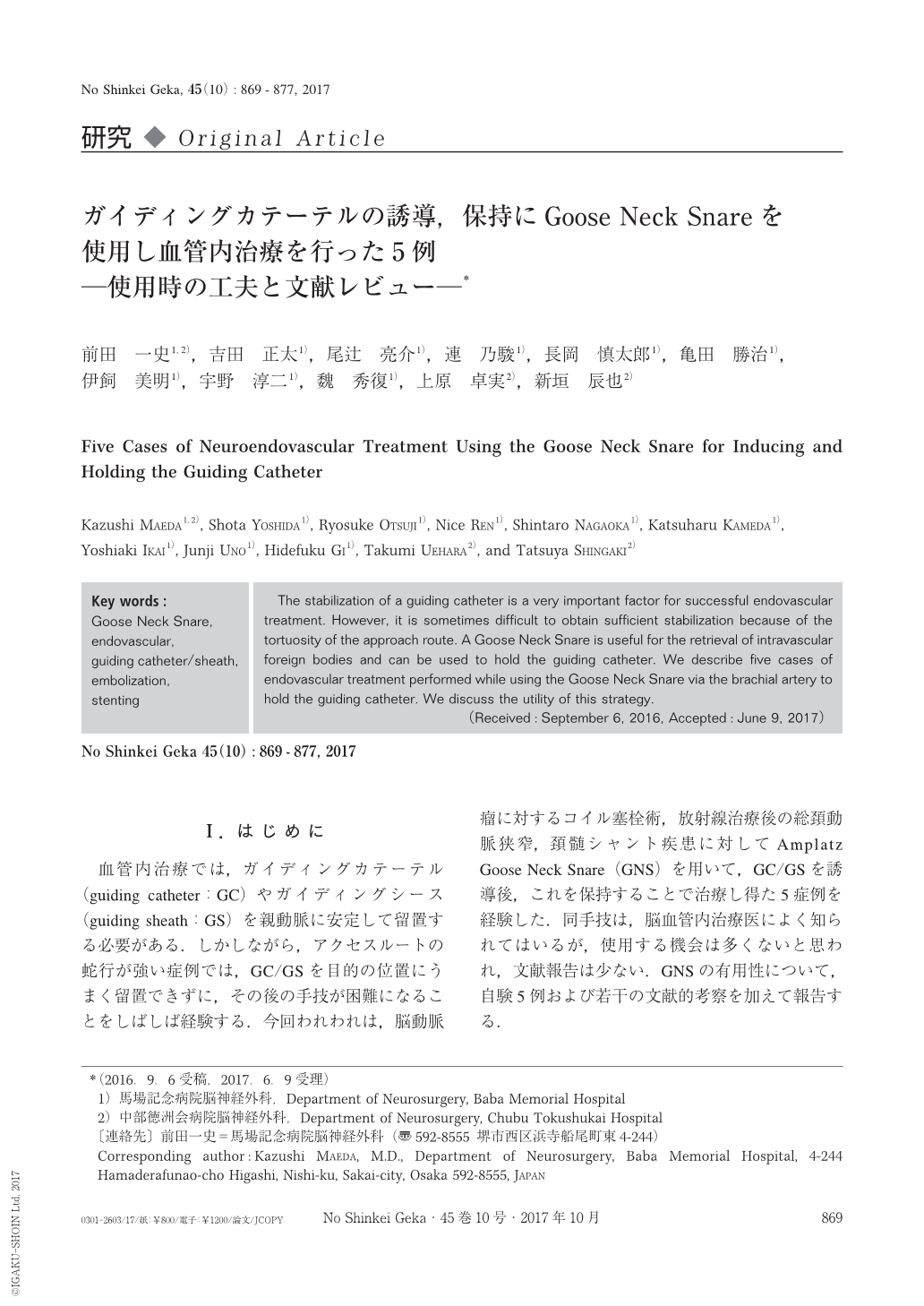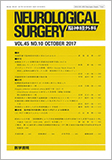Japanese
English
- 有料閲覧
- Abstract 文献概要
- 1ページ目 Look Inside
- 参考文献 Reference
Ⅰ.はじめに
血管内治療では,ガイディングカテーテル(guiding catheter:GC)やガイディングシース(guiding sheath:GS)を親動脈に安定して留置する必要がある.しかしながら,アクセスルートの蛇行が強い症例では,GC/GSを目的の位置にうまく留置できずに,その後の手技が困難になることをしばしば経験する.今回われわれは,脳動脈瘤に対するコイル塞栓術,放射線治療後の総頚動脈狭窄,頚髄シャント疾患に対してAmplatz Goose Neck Snare(GNS)を用いて,GC/GSを誘導後,これを保持することで治療し得た5症例を経験した.同手技は,脳血管内治療医によく知られてはいるが,使用する機会は多くないと思われ,文献報告は少ない.GNSの有用性について,自験5例および若干の文献的考察を加えて報告する.
The stabilization of a guiding catheter is a very important factor for successful endovascular treatment. However, it is sometimes difficult to obtain sufficient stabilization because of the tortuosity of the approach route. A Goose Neck Snare is useful for the retrieval of intravascular foreign bodies and can be used to hold the guiding catheter. We describe five cases of endovascular treatment performed while using the Goose Neck Snare via the brachial artery to hold the guiding catheter. We discuss the utility of this strategy.

Copyright © 2017, Igaku-Shoin Ltd. All rights reserved.


